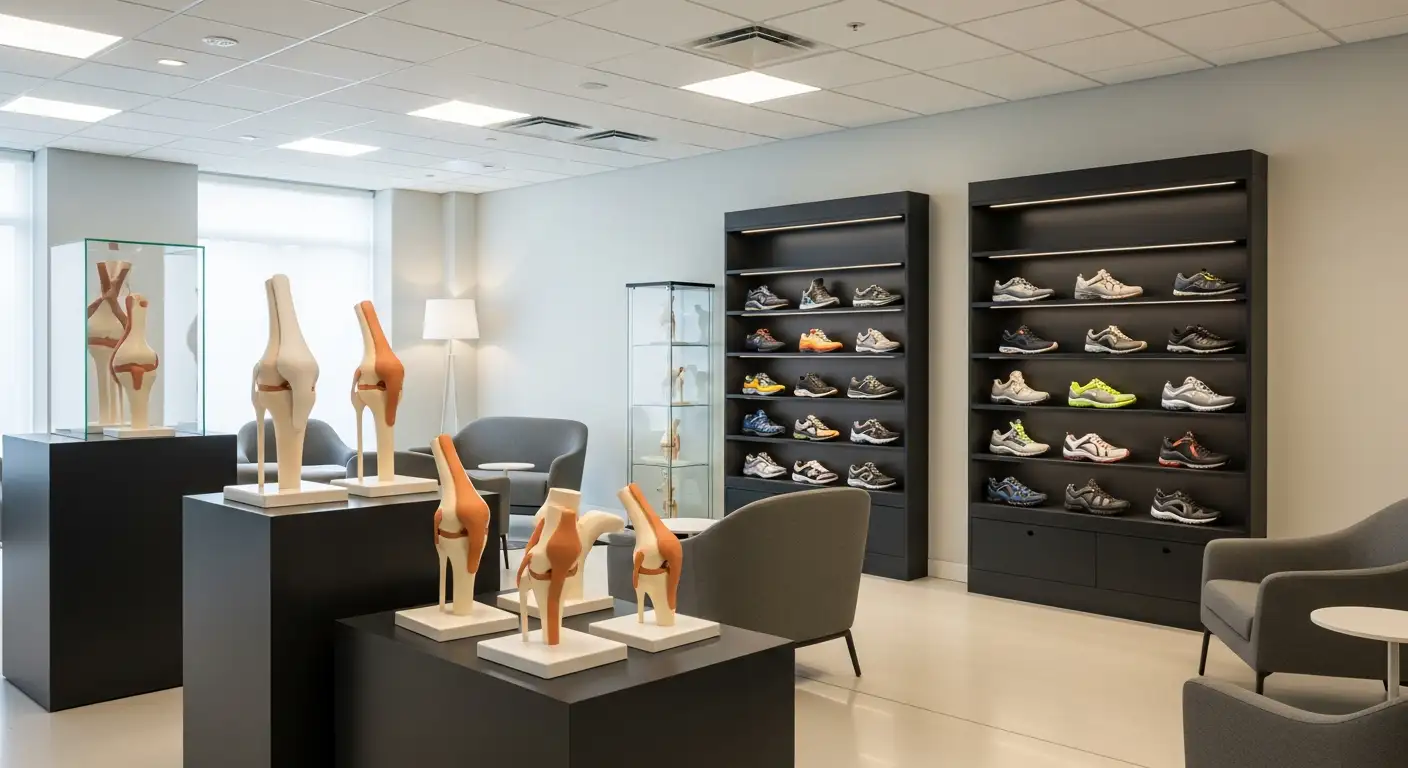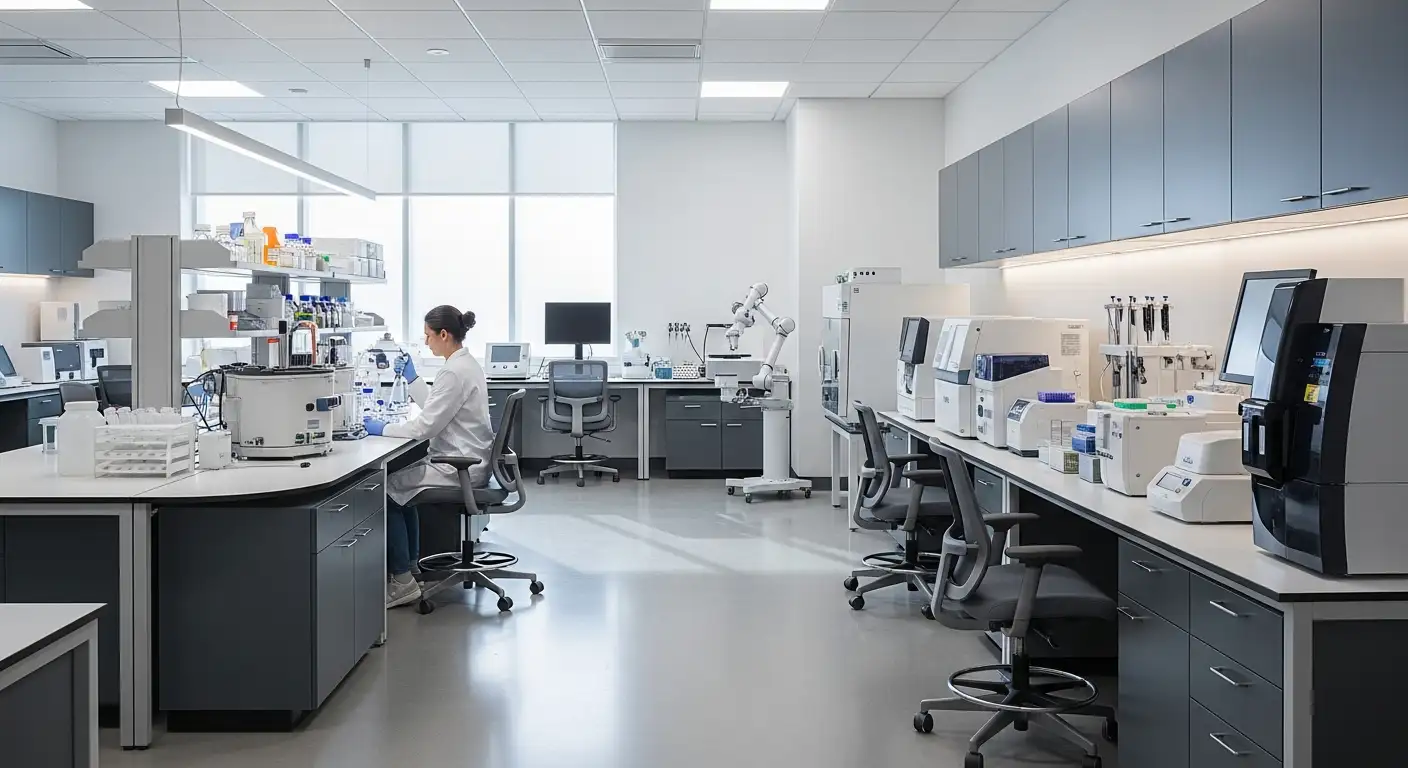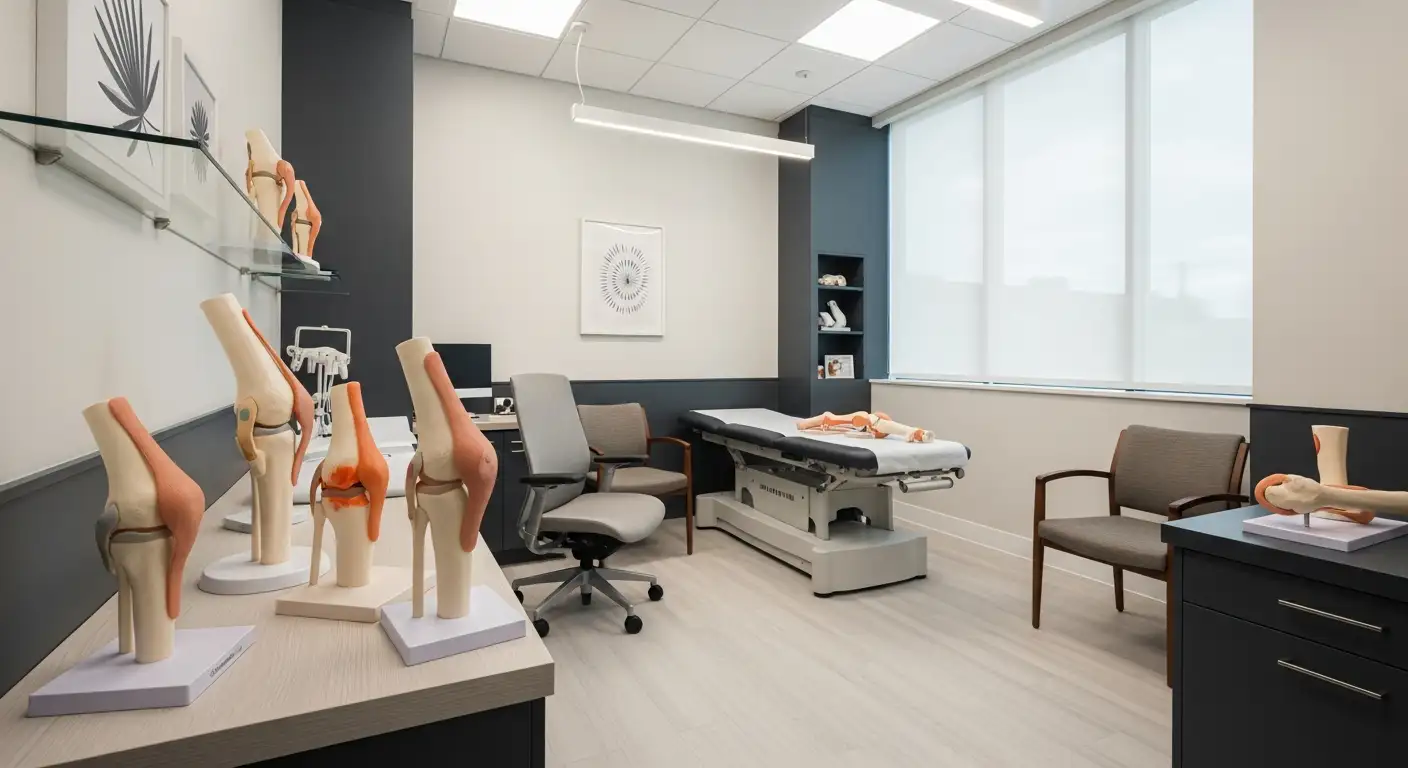Illuminating a Promising Treatment Pathway
Low-level laser therapy (LLLT), also known as photobiomodulation, has emerged as a non-invasive, safe, and potentially effective treatment option for managing osteoarthritis pain. With increasing clinical interest and scientific evidence, this therapy uses specific wavelengths of light to penetrate tissues and stimulate cellular activities pertinent to pain reduction and tissue healing. This article explores the mechanisms, benefits, and current research supporting LLLT as an adjunct or alternative therapy for osteoarthritis, especially knee osteoarthritis (KOA).
Mechanisms of Low-Level Laser Therapy in Osteoarthritis

What are the benefits of low-level laser therapy (LLLT) for osteoarthritis pain?
Low-level laser therapy (LLLT) offers promising benefits for managing osteoarthritis (OA) pain. It primarily reduces inflammation, which is a central component of OA pathology. By decreasing inflammatory markers such as cytokines IL-1β and IL-6, LLLT can alleviate joint swelling and tenderness.
Additionally, LLLT modulates nociceptor hypersensitivity, helping to reduce sensations of pain. It stimulates mitochondrial activity within cells, which boosts ATP production—the energy source needed for tissue repair and regeneration.
Another benefit is the stimulation of collagen synthesis, essential for rebuilding damaged cartilage and supporting joint structure. Increased blood flow resulting from angiogenesis facilitates the delivery of nutrients and healing factors to affected tissues.
Many clinical studies show that LLLT improves joint function, reduces pain scores, and enhances overall quality of life. Its non-invasive nature and capacity to promote tissue healing make it a viable adjunct or alternative to traditional treatments, especially in cases like knee and neck osteoarthritis. Systematic reviews support these findings, confirming that appropriately dosed LLLT can significantly alleviate pain and disability.
Preclinical and Animal Study Insights
 Research on low-level laser therapy (LLLT) in osteoarthritis (OA), especially knee osteoarthritis (KOA), spans preclinical studies and animal models. These studies are fundamental in understanding how laser therapy influences joint health at the biological level. In KOA models and cellular experiments, LLLT applied at wavelengths around 808 nm has shown promising effects.
Research on low-level laser therapy (LLLT) in osteoarthritis (OA), especially knee osteoarthritis (KOA), spans preclinical studies and animal models. These studies are fundamental in understanding how laser therapy influences joint health at the biological level. In KOA models and cellular experiments, LLLT applied at wavelengths around 808 nm has shown promising effects.
In animal and in vitro studies, LLLT has been observed to modulate morphological changes within joints. For example, it can reduce inflammatory cell infiltration, which is a hallmark of joint inflammation. Additionally, LLLT influences cytokine profiles, decreasing pro-inflammatory cytokines like IL-1β and IL-6, which are critical mediators of joint degeneration.
Anti-inflammatory effects are prominent in these models. Reduced inflammation correlates with decreased swelling and pain in animal subjects. The modulation of inflammatory responses appears to be dose-dependent, with lower laser powers such as 50 mW often being more effective than higher powers, indicating the importance of proper dosage.
Another significant finding is that LLLT promotes cartilage repair in osteoarthritic joints. It stimulates the production of fibroblasts and promotes angiogenesis, which are vital for tissue regeneration. As a result, it helps slow or reverse joint deterioration, paving the way for improved joint function.
Overall, animal and preclinical studies confirm that LLLT acts by penetrating tissues and targeting cell mitochondria, increasing ATP production and reducing inflammatory processes. These findings support the therapeutic potential of LLLT and justify further clinical investigation.
Clinical Evidence and Systematic Reviews
 Numerous systematic reviews and meta-analyses involving over 1,000 patients provide strong evidence for the effectiveness of low-level laser therapy (LLLT) in treating osteoarthritis pain. These studies show that LLLT, especially using wavelengths between 785 and 904 nm, significantly reduces pain and disability in patients, with the most notable improvements occurring around 2 to 4 weeks after completing treatment.
Numerous systematic reviews and meta-analyses involving over 1,000 patients provide strong evidence for the effectiveness of low-level laser therapy (LLLT) in treating osteoarthritis pain. These studies show that LLLT, especially using wavelengths between 785 and 904 nm, significantly reduces pain and disability in patients, with the most notable improvements occurring around 2 to 4 weeks after completing treatment.
The efficacy of laser therapy is supported by data from multiple randomized controlled trials (RCTs) involving diverse patient populations. Results indicate that LLLT can improve joint function, decrease pain scores, and enhance range of motion, particularly in knee osteoarthritis cases. Importantly, these benefits are achieved without reported adverse effects, confirming LLLT as a safe treatment modality.
The mechanism behind these benefits involves photobiomodulation—light energy absorption by cells—leading to reduced inflammation, stimulation of cartilage repair, and increased mitochondrial energy production. This process helps alleviate pain and promote tissue healing.
Despite some inconsistent findings and variability in application protocols, current evidence increasingly supports LLLT as a promising non-invasive approach for osteoarthritis management. While guidelines have historically been conservative, recent research suggests updating recommendations to include LLLT as a valid treatment option for improving quality of life in osteoarthritis patients.
Overall, the accumulated evidence from large-scale reviews underscores LLLT’s potential to provide sustained pain relief and functional improvement, making it a valuable tool in integrated osteoarthritis treatment plans.
Quantitative Evidence of Pain and Disability Reduction
Numerous studies have quantitatively demonstrated LLLT’s ability to alleviate pain and improve function in osteoarthritis (OA) patients.
Pain reduction is often measured using the Visual Analogue Scale (VAS), a subjective tool quantifying pain intensity. Meta-analyses reveal that LLLT significantly decreases VAS scores, with immediate post-treatment reductions of approximately 14–15 mm compared to placebo. These effects are accentuated when treatment doses adhere to guidelines such as those from the World Association for Laser Therapy (WALT), which recommend doses of 4–8 J per treatment spot at wavelengths around 785–860 nm. During follow-up periods extending from 1 to 12 weeks after therapy, pain relief continues to be evident, with VAS reductions reaching over 23 mm, and peak effects often occurring 2–4 weeks post-treatment, averaging around 31 mm reduction.
Disability improvement is also well documented. Using scales such as the Western Ontario and McMaster Universities Osteoarthritis Index (WOMAC), patients receiving LLLT show notable decreases in disability scores. For example, significant standardized mean difference (SMD) scores of around 0.59 to 0.66 were noted immediately following therapy and during subsequent follow-ups, indicating meaningful gains in joint function and health-related quality of life.
The duration of these benefits covers several weeks post-therapy. In one randomized controlled trial involving 43 participants, effects persisted at six months, with reductions in pain, improved range of motion, increased muscle strength, and decreased medication use. This indicates that LLLT’s effects are not only immediate but can also provide longer-term relief, especially when combined with exercise.
Overall, the accumulated data strongly support the effectiveness of LLLT in managing osteoarthritis symptoms, with consistent evidence showing reductions in pain and disability lasting weeks to months after treatment. Further research with standardized protocols is ongoing to optimize these outcomes.
| Measurement Tool | Effect Size | Typical Reduction | Duration of Benefit | Notes |
|---|---|---|---|---|
| VAS (mm) | 14–31 mm | Immediate to 12 weeks | Several weeks to months | Enhanced with WALT doses |
| WOMAC | SMD 0.59–0.66 | Post-treatment | Up to 6 months | Improved joint function |
These findings validate LLLT as an effective, non-invasive approach for reducing pain and improving life quality in osteoarthritis patients, though standardization of treatment parameters remains essential for broader clinical adoption.
Symptom Relief and Joint Function Improvement
How does low-level laser therapy help alleviate symptoms and improve joint health in osteoarthritis patients?
Low-level laser therapy (LLLT) plays a significant role in alleviating symptoms and improving joint health in osteoarthritis (OA) patients. The therapy works by reducing inflammation within the affected joint, which is a primary cause of pain and swelling. Through mechanisms such as decreasing pro-inflammatory cytokines like IL-1β and IL-6, LLLT diminishes the inflammatory response.
Additionally, LLLT stimulates cellular activity, especially in mitochondria, resulting in increased ATP production that enhances tissue repair. It promotes the synthesis of collagen and stimulates fibroblast activity, which supports cartilage regeneration. Improved blood circulation facilitated by laser therapy helps deliver essential nutrients to joint tissues, accelerating healing processes.
Clinically, many studies have reported that LLLT provides short-term pain relief and reduces morning stiffness—particularly beneficial for rheumatoid arthritis. It may also block pain signals and stimulate the release of endorphins, natural painkillers of the body.
Furthermore, LLLT helps improve joint function by increasing range of motion and decreasing discomfort during daily activities. Its non-invasive nature, combined with a low risk of adverse effects, makes it an attractive adjunct treatment. When incorporated alongside exercises or manual therapy, LLLT contributes to a comprehensive approach in managing osteoarthritis symptoms.
Despite some variability in clinical outcomes, evidence from systematic reviews and recent trials supports its effectiveness. However, further research on optimizing treatment parameters is needed to establish standardized protocols for maximum benefit.
Treatment Protocols and Guidelines
 Low-level laser therapy (LLLT) protocols for osteoarthritis typically include multiple sessions spread over several weeks, with the goal of reducing pain and inflammation and promoting tissue repair.
Low-level laser therapy (LLLT) protocols for osteoarthritis typically include multiple sessions spread over several weeks, with the goal of reducing pain and inflammation and promoting tissue repair.
Standard treatment regimens often involve between 8 to 20 sessions, occurring 2 to 3 times per week. Each session usually lasts around 10 to 20 minutes, depending on the specific protocol and treatment area.
Clinicians commonly use wavelengths in the red to near-infrared spectrum, ranging from approximately 630 nm to 904 nm. Wavelengths such as 830 nm are frequently employed because of their deep tissue penetration capabilities.
The energy dose administered per session varies but generally falls between 1 to 8 Joules per square centimeter (J/cm²). For targeted application points, practitioners often choose specific areas over affected joints or acupuncture points to target inflamed or degenerated tissues.
Application involves either directly targeting the affected area or along meridian points for better outcomes. Treatment parameters, including wavelength, power density (e.g., 50 to 100 mW), and duration, are tailored to patient needs and response.
While standardized, evidence-based protocols are still under development, many practitioners personalize treatment based on patient response, severity of osteoarthritis, and current research findings.
Ongoing clinical studies aim to establish more precise guidelines, but current best practices emphasize consistent application of optimal wavelengths, dosages, and treatment frequency to maximize benefits like pain relief, inflammation reduction, and cartilage regeneration.
Safety Profile and Adverse Effects
 Is low-level laser therapy a safe and non-invasive option for managing osteoarthritis pain? Low-level laser therapy (LLLT) is generally regarded as a safe and minimally invasive treatment for osteoarthritis, especially knee osteoarthritis. Across numerous studies, patients have reported minimal to no adverse effects, making it a well-tolerated option.
Is low-level laser therapy a safe and non-invasive option for managing osteoarthritis pain? Low-level laser therapy (LLLT) is generally regarded as a safe and minimally invasive treatment for osteoarthritis, especially knee osteoarthritis. Across numerous studies, patients have reported minimal to no adverse effects, making it a well-tolerated option.
Reported side effects are rare but may include mild skin discomfort, redness, or swelling at the treatment site. These are usually temporary and resolve quickly without the need for additional intervention.
Long-term safety considerations are favorable, as LLLT does not involve heat, vibration, or invasive procedures. However, as with any medical treatment, ongoing research is essential to fully understand long-term effects, but current evidence suggests no significant risks when applied correctly.
Precautions and contraindications include avoiding use over eyes without proper protection and caution in pregnant women, individuals with cancer, or those with certain photosensitive skin conditions. It is crucial for patients to consult healthcare professionals before initiating therapy to ensure its safety and appropriateness.
Patient selection is important; LLLT is suitable for most individuals seeking non-invasive pain relief, but those with specific contraindications should be advised accordingly. Proper dosing and adherence to treatment protocols, like those recommended by the World Association for Laser Therapy (WALT), are essential for safety and optimal results.
In summary, LLLT appears to be a safe, well-tolerated option for osteoarthritis management, with a low risk of adverse effects, making it a valuable addition to conservative treatment strategies.
Additional Benefits and Broader Applications
Low-level laser therapy (LLLT) offers promising benefits beyond knee osteoarthritis, making it a versatile tool in managing various conditions.
Many patients experience pain relief, improved mobility, and an overall better quality of life following LLLT treatments. For example, cases have documented substantial reductions in pain and swelling, leading to increased range of motion and greater ease in daily activities.
One significant potential of LLLT is its ability to delay or even prevent the need for surgical interventions. Studies show that prolonged sessions combined with exercises can sustain symptom relief for months, reducing the likelihood of knee replacements or other invasive procedures.
This therapy is also effective in treating a variety of other musculoskeletal issues, including tendinopathies, ligament injuries, frozen shoulder, and wound healing. Its anti-inflammatory and tissue regenerative properties can accelerate recovery in these conditions.
Moreover, when integrated with physical therapy, LLLT can enhance overall outcomes. Combining laser treatment with stretching, strengthening exercises, and manual therapy has been shown to maximize pain reduction, functional gains, and muscle strength.
How does low-level laser therapy work?
LLLT, also called photobiomodulation, involves using red and near-infrared light to activate cellular processes. The light penetrates tissues up to several centimeters deep, targeting mitochondria—cellular energy centers—with wavelengths typically between 632 and 904 nm.
Absorbing these light photons, mitochondria increase ATP production, which boosts cell energy and promotes repair. Additionally, LLLT reduces inflammatory mediators like cytokines, inhibits pain signals, and stimulates the proliferation of fibroblasts and blood vessels.
Through these mechanisms, LLLT fosters faster tissue regeneration, minimizes inflammation, and alleviates pain. Its safety profile, minimal side effects, and adaptability make it a valuable option across various treatment protocols.
Advancing Pain Management with Photobiomodulation
As scientific research continues to unravel the mechanisms and optimize protocols, low-level laser therapy stands out as a promising, safe, and effective modality for osteoarthritis pain relief and joint health improvement. Its ability to modulate inflammation, promote tissue repair, and provide symptomatic relief with minimal risks suggests a valuable addition to comprehensive osteoarthritis management strategies. Ongoing high-quality studies and consensus on treatment standards will further clarify its role, potentially positioning LLLT as a mainstream option for millions affected by osteoarthritis worldwide.
References
- Is low-level laser therapy effective for patients with knee joint ...
- Looking into Low Level Laser Therapy (LLLT) – An alternative therapy
- Low-Level Laser Therapy to Reduce Knee Osteoarthritis Pain and ...
- Can osteoarthritis be treated with light? - Arthritis Research & Therapy
- Low Level Laser Therapy - Physiopedia
- Efficacy of low-level laser therapy on pain and disability ... - BMJ Open
- What to know about cold laser therapy - Medical News Today





